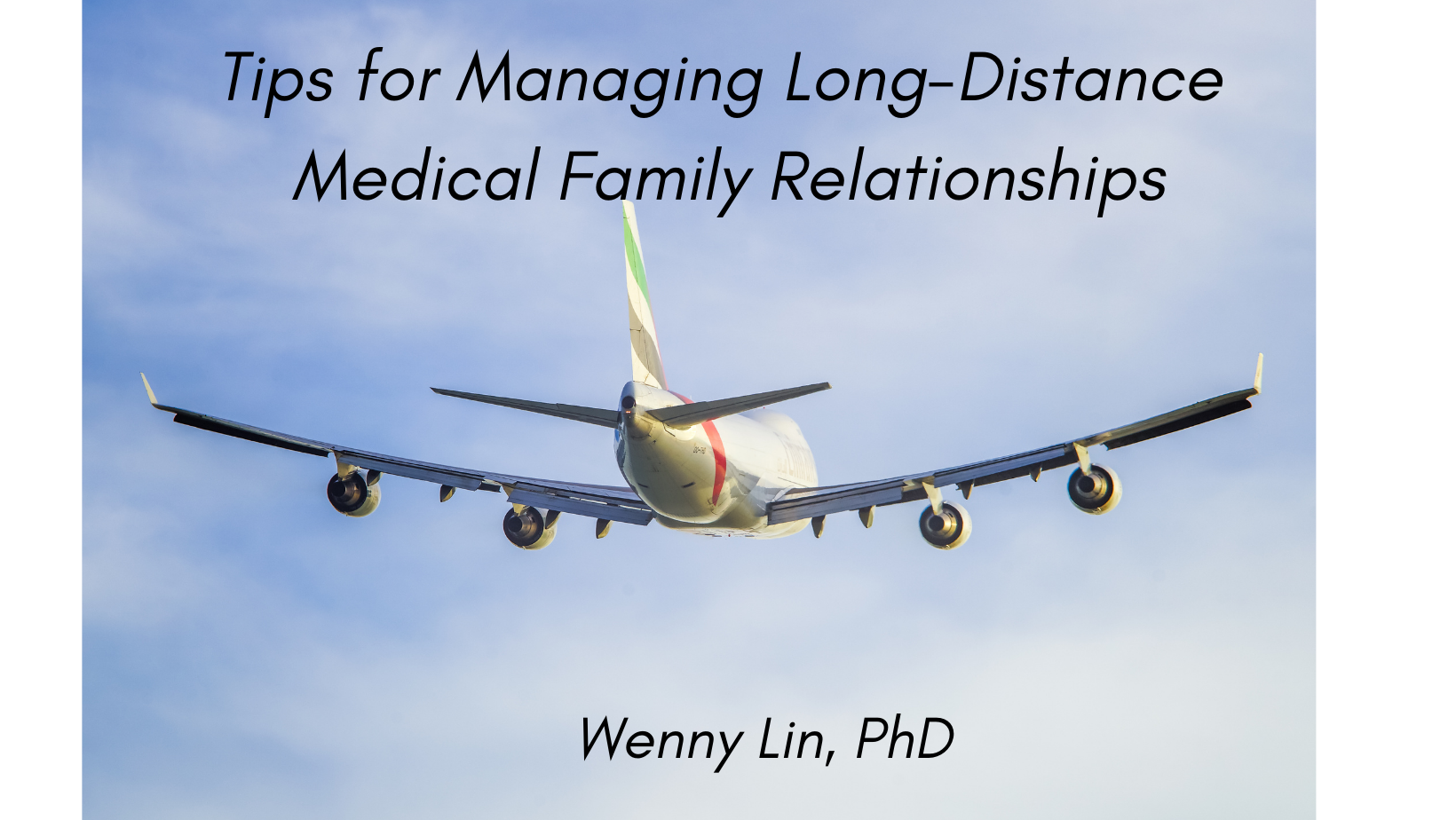
At our wedding, my partner gave a speech that recounted the approximately 50 flights we’d taken to visit each other during the five years of our relationship spent long-distance. Even after we got married, we continued living in different states for another year while he finished his PhD and I completed my postdoctoral fellowship.
Finally, after he started medical school on the opposite coast, I found a new job located in the same area so we could live together. Given my experience with being in a long-distance relationship, I can certainly empathize with medical families that decide to spend some time living apart.
Medical families might consider a long-distance living situation for a number of reasons. The most common reasons are likely training or career requirements and family needs. These long-distance arrangements are not easy, and this article provides tips for medical families to thrive in these situations.
Making the Decision to Be A Long-Distance Medical Family
The decision to be long-distance temporarily is never taken lightly, but it can be done successfully with careful planning and communication. The important questions to consider when shifting to a long-distance relationship include:
1. How long will the separation be?
2. How will this decision affect your spouse/partner and children?
3. Can you afford to maintain two households? What adjustments will be necessary from a financial standpoint?
4. How often can you realistically visit each other? What mode of transportation will be used to travel between homes?
5. Will living apart cause tension or problems between you and your partner? How will you maintain the relationship while separated?
Most of the time, there is no right or wrong decision for whether to be in a long-distance medical family relationship. There are likely both advantages and disadvantages to every option. Your ultimate decision may not be the choice that another medical family is willing or able to choose.
Tips for thriving in a long-distance medical family relationship
As my partner completes his residency this year and looks forward to starting fellowship, we are contemplating another temporary long-distance separation. This time, however, we have a son who has become accustomed to dad doing bedtime during this last year of residency.
Therefore, on top of managing the logistics of two households, we’re also devising ways to maintain our connection to each other, even if we cannot be physically together. We’ve discussed recording videos for our son to watch when dad is still working in a different time zone during his bedtime.
Just because I’ve done many years of a long-distance relationship doesn’t mean that this next phase will be any easier. However, I know that I can use our prior experience to plan ahead.
Here are some tips for thriving in a long-distance medical family relationship:
1. Maintaining Connection
Long-distance arrangements can be difficult for both partners and families. It is important to find ways to stay connected despite the physical separation. Here are some methods to stay connected:
- Stay in touch regularly. Whether it’s through text, email, video chat, or good old-fashioned phone calls, make a point to stay in touch with each other as often as possible. But also be realistic about the timing and frequency of communication. Some busy rotations might mean delayed responses.
- Make time for regular reunions. Try to schedule periodic visits. Depending on the distance apart, these might be at shorter or longer intervals. If possible, see if some remote work can be negotiated with employers so that visits can be extended without having a negative impact on careers.
- Use technology to your advantage. Technology can be a great way to stay connected. Use video chat to have virtual family dinners or movie nights, exchange photos and videos often, and stay up-to-date on each other’s lives. Recorded videos might work particularly well if there are time zone differences.
2. Live your best life in your respective locations.
While partners are temporarily separated, it is important for families to thrive in their respective locations. Here are some ways to do this:
- Make friends and maintain friendships. It can be demotivating to make friends when you’re in a location only temporarily. However, it’s important to make an effort to connect with others. Make friends at work or connect through social media, community groups, or mutual interests.
- Find your support system. It’s important to have a strong support system, whether this is in-person or virtually. Both partners may find it helpful to have a “go-to” person in the other city that they can rely on for support. The childrens’ schools might require multiple “emergency contacts,” so building a local “village” will come in handy.
- Get involved in your community. Become active in your community. This can be a great way to meet people with shared interests and make lasting connections. Volunteer at a local charity, join a book club, or take up a new hobby. Sign the kids up for new activities.
- Bonus tip – It’s even better if you have friends who live close to your partner’s location. That way, if you’re visiting but your partner has to study or is on call, you will still have people to see and things to do.
3. Be proactive about the financial implications.
There are likely to be some financial implications of living in a long-distance medical family relationship. It is important to be proactive and make adjustments where necessary. Here are some tips:
- Establish a budget. Create or update your budget to reflect the fact that you will now have two households. Factor in the increased cost of living in another city, commuting costs, and any other variable expenses. With one parent in another location, families might have increased childcare and other additional outsourcing expenses.
- Review your benefits. Check with your employer to see if there are any benefits that can help offset the cost of a long-distance arrangement. For example, some hospital employers offer subsidies for housing or transportation. If you choose a family health insurance plan, make sure that it will cover the partner who is living in a different location.
- Communicate about money. Have regular conversations about finances with your partner. Discuss any concerns or changes to the budget. This can help avoid any misunderstandings down the road.
4. Be understanding and flexible.
Building and maintaining a successful long-distance medical family relationship takes time and effort. Embody the following mindsets:
- Have patience. Inevitably, things will come up that make it difficult to stick to your agreed-upon communication schedule. Be understanding of each other’s needs and be willing to be flexible when necessary.
- Be supportive. When one partner is going through a tough rotation or experiencing a personal setback, be there for them. Offer words of encouragement and be a listening ear.
- Have trust in your partner and family. Partners in any long-distance relationship need to have trust in each other that they will each be loyal and faithful. Trust in the strength of your relationship and your family.
Last words
A local friend reached out recently when I told her about our difficult decision to live apart during my partner’s fellowship. She enthusiastically offered to be part of my “village.” I’m going to take her up on that!
A long-distance medical family relationship is a unique challenge that requires adaptability, understanding, and communication. By following these tips, you can set your family up for success during this time apart.










